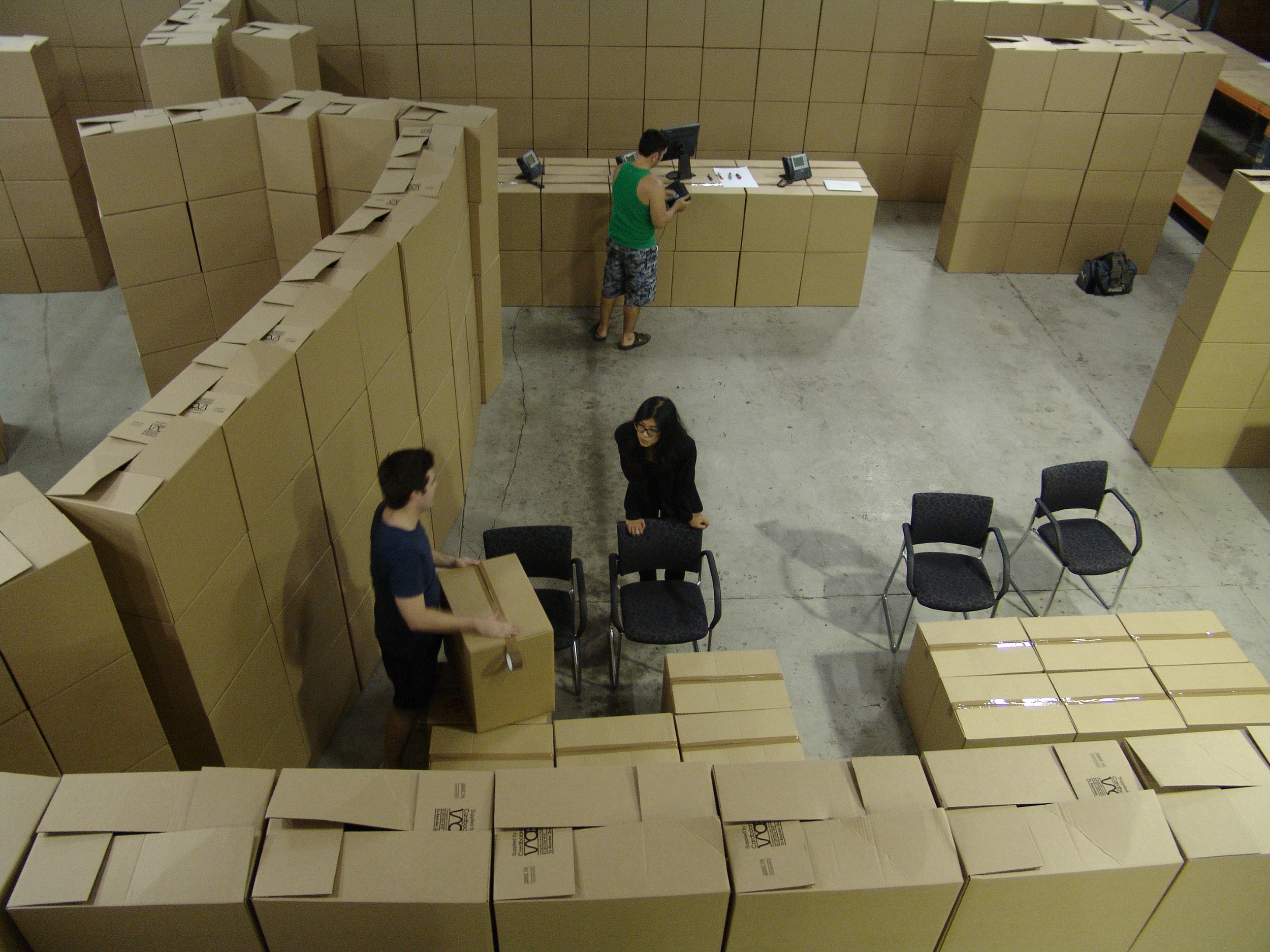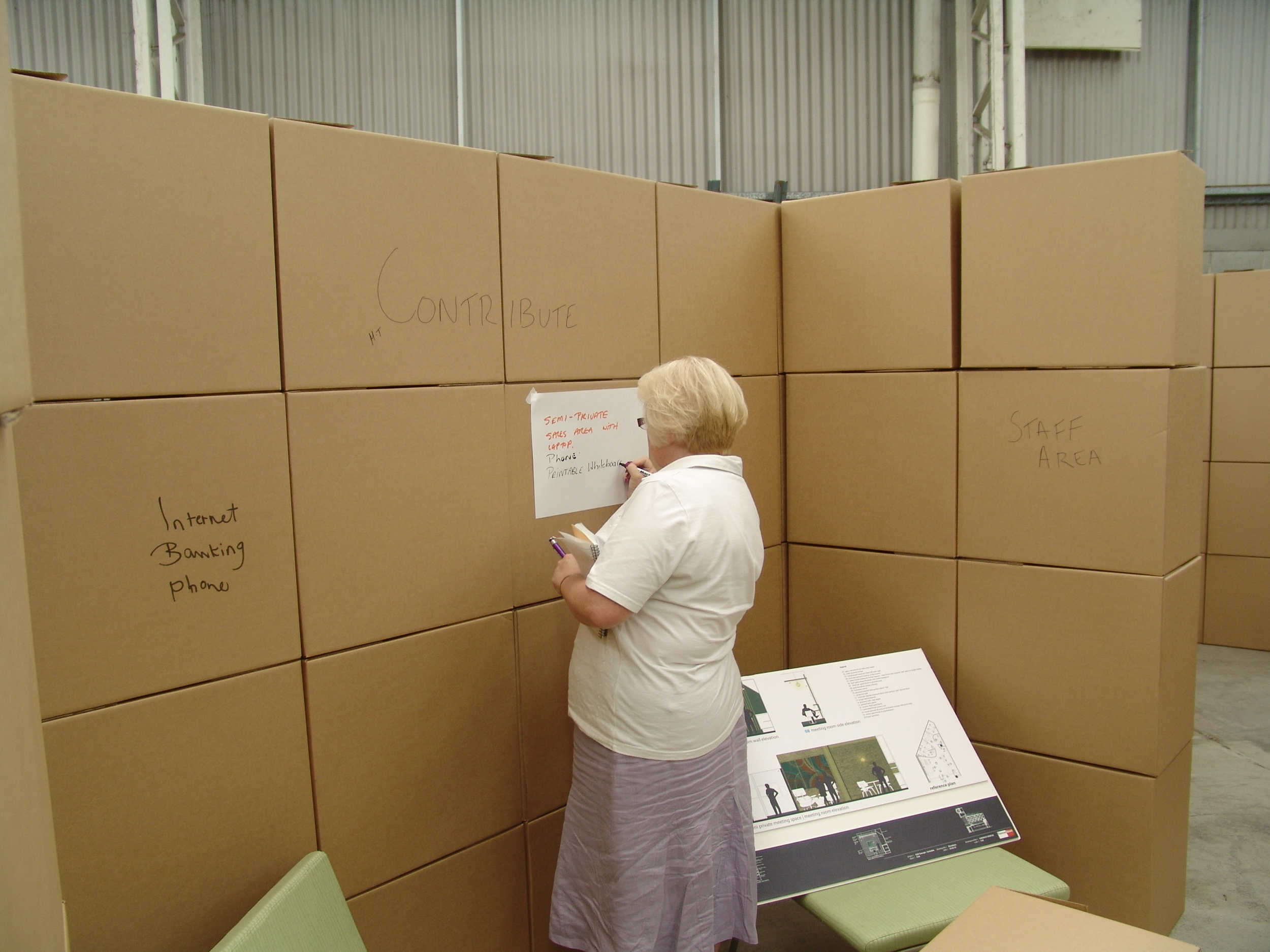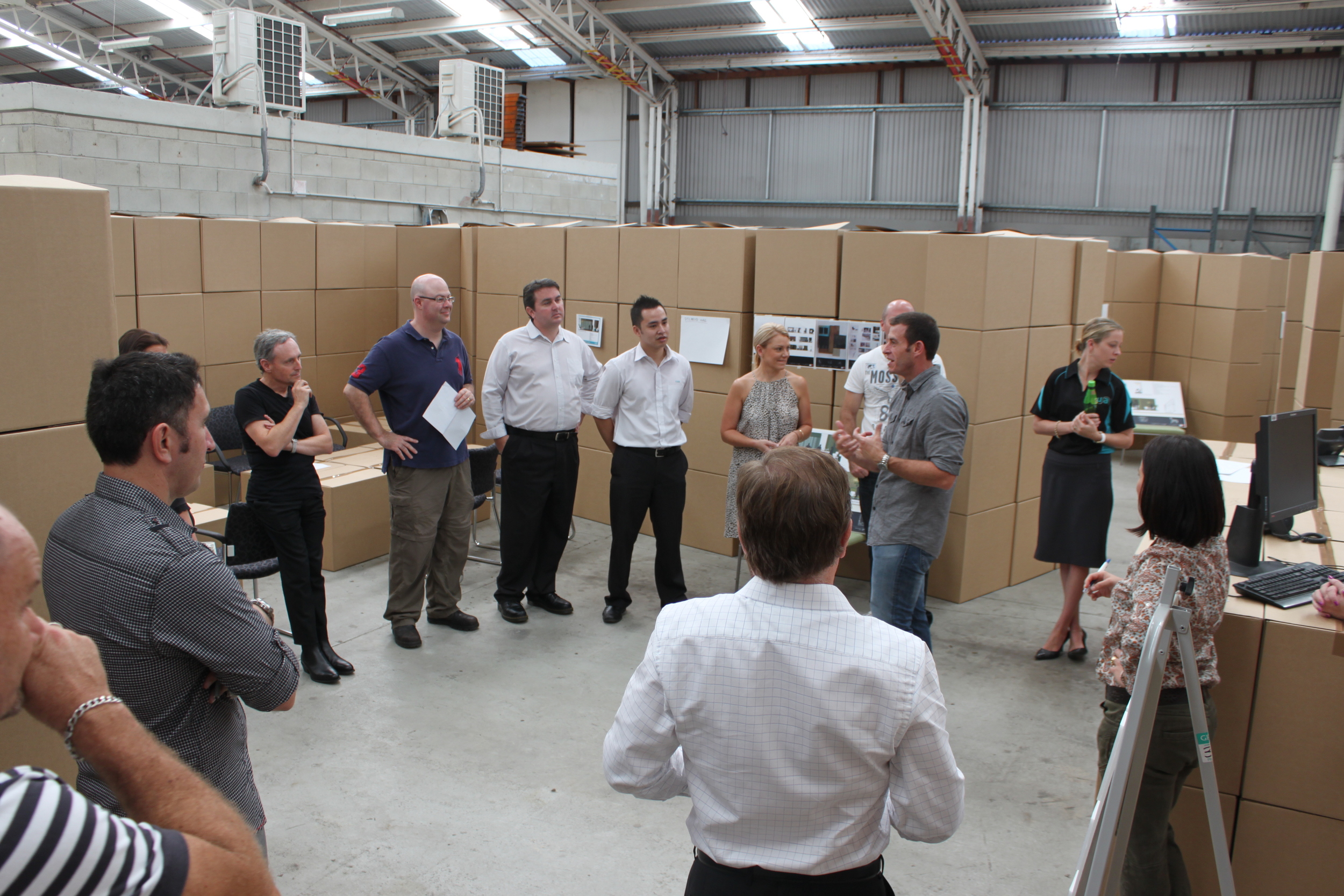One of our goals as designers and architects is to help clients evaluate their current customer experience, to discover through consultation and research how this could be improved and then create and test a design focused on delivering the identified and improved outcome. Change must deliver value. We start with the questions; where can you improve the experience for your customers, what resources do you have that you are not exploiting and what customer demands and opportunities are you missing out on? Our goal is to create a design that is not only fresh and unique but carefully integrated with the client’s resources, business model and service offer. Our experience to date with some of Australia’s most significant retail and service providers has seen the creation of innovative and powerful design outcomes and architectural experiences.
For CUA we rapidly bodystormed a new set of service processes and spatial designs prior to them having to commit to any construction expenditure. We built ownership and avoided expensive and unnecessary mistakes. Key design innovations were selected and mocked up. This was a rapid and very low cost, low risk way to reassess or ‘de-bank’ their retail space design. We looked at their current and projected customer engagement processes and the required spatial accommodation.
We recognised that both their physical and virtual spaces must deliver their brand values as tangible experiences. While the on line and advertising components of the customer experience are often carefully tested and prototyped this rarely happens with the physical in-store part of the customer journey. Consequently the physical spaces at the end of the customer experience path are predictably conservative, uniformly ordinary and disappointing. They should actually be the most individual and exciting but that requires taking risks. That is an expense that most businesses can not currently afford, not to mention the risk to their brand. Using our prototyping techniques we could walk into the new design concepts before they were built and avoid expensive mistakes. This Bodystorming workshop used role-playing and we also generated user journey maps to help structure the final design direction.
Project credits
Design and Facilitation: Michael Trudgeon, Dennis Quinn, Costa Gabriel, Adelle Lin
Installation: Jake Alderman
Drawings: Costa Gabriel, Adelle Lin












